Tembleque (Puerto Rican Coconut Pudding)
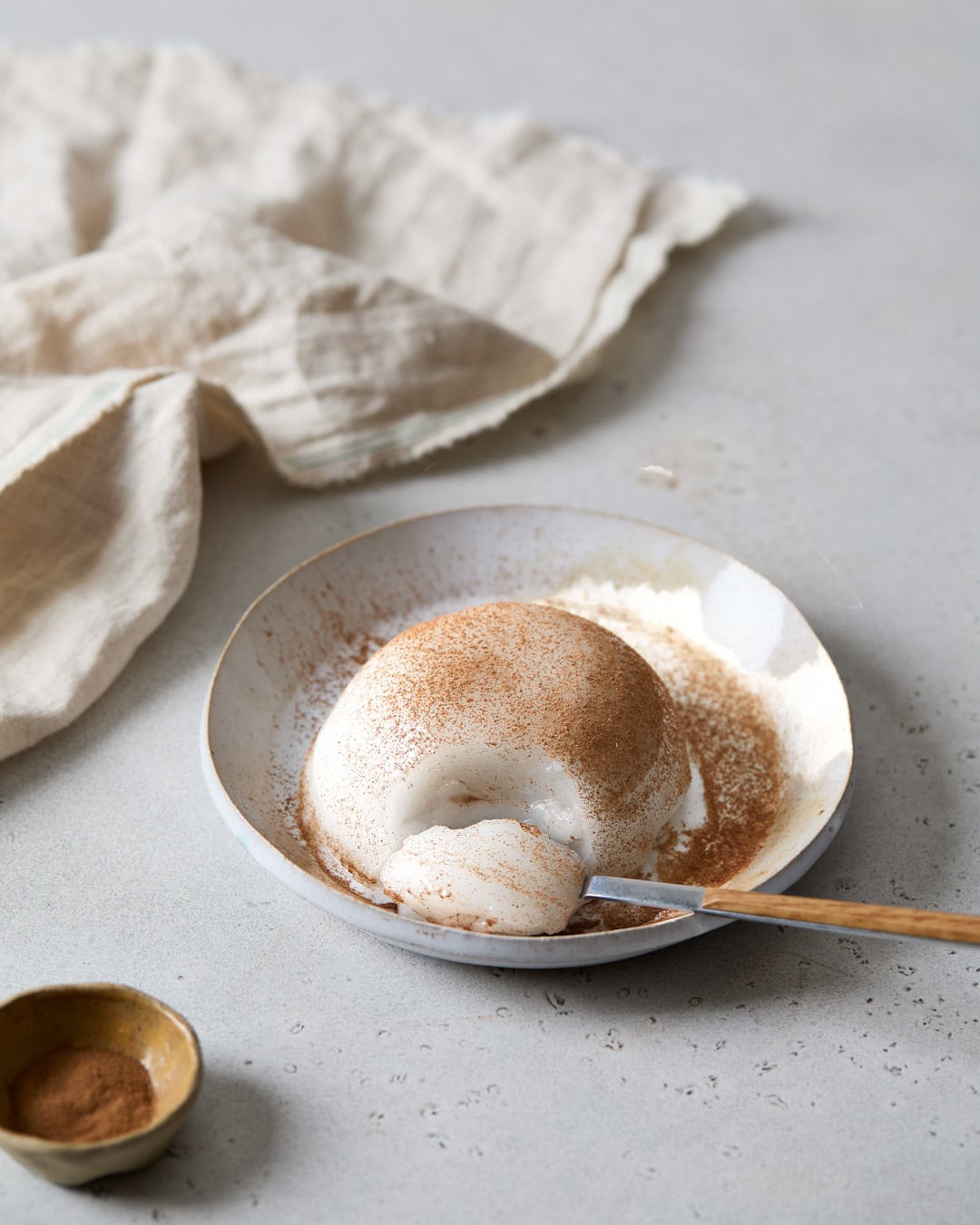
What is Tembleque?
Tembleque is a traditional Puerto Rican coconut pudding known for its smooth, creamy texture and delicate coconut flavor. The name “tembleque” means “wiggly” in Spanish, which captures its texture but doesn’t fully convey the velvety, creamy consistency of this dessert. Made primarily from coconut milk, sugar, and cornstarch, this vegan-friendly coconut pudding is a favorite in Puerto Rico, especially around Christmas, bringing tropical flavors to family gatherings.
This dessert revolves around coconut milk, sweetened with sugar, thickened with cornstarch, and finished with a dusting of cinnamon. Homemade coconut milk enhances its flavor, but frozen coconut or ready-made coconut milk works well for a simpler version.

History of Puerto Rican Tembleque
Tembleque, a beloved Puerto Rican coconut pudding, has a rich history in Puerto Rican culture, with roots dating back to colonial times when coconut was widely used in coastal regions. Influenced by Spanish culinary traditions, this coconut pudding became a holiday favorite. Its rich coconut taste and silky texture symbolize Puerto Rican hospitality, with the dessert being a staple at Christmas gatherings and family celebrations across the island.

Ingredients You’ll Need & How to Substitute
- Coconut milk: Essential for the creamy texture and coconut flavor. While homemade coconut milk gives the best taste, store-bought coconut milk can be used for convenience. It might, however, make the finished dessert look more opaque rather than bright white.
- Golden granulated sugar: Adds sweetness to the pudding. Regular white sugar can work as a substitute, but golden sugar adds a subtle caramel note.
- Cornstarch: Helps thicken the pudding to achieve a smooth, custard-like consistency. You can substitute with potato starch, arrowroot powder or tapioca starch, though the texture may vary slightly.
- Ground cinnamon: Traditionally sprinkled on top for garnish. You can also use cocoa powder as a different topping.
How to Make Tembleque (Step-by-Step)
Prepare the cornstarch mixture. In a saucepan, mix the sugar, cornstarch, and salt with a few tablespoons of coconut milk until smooth.
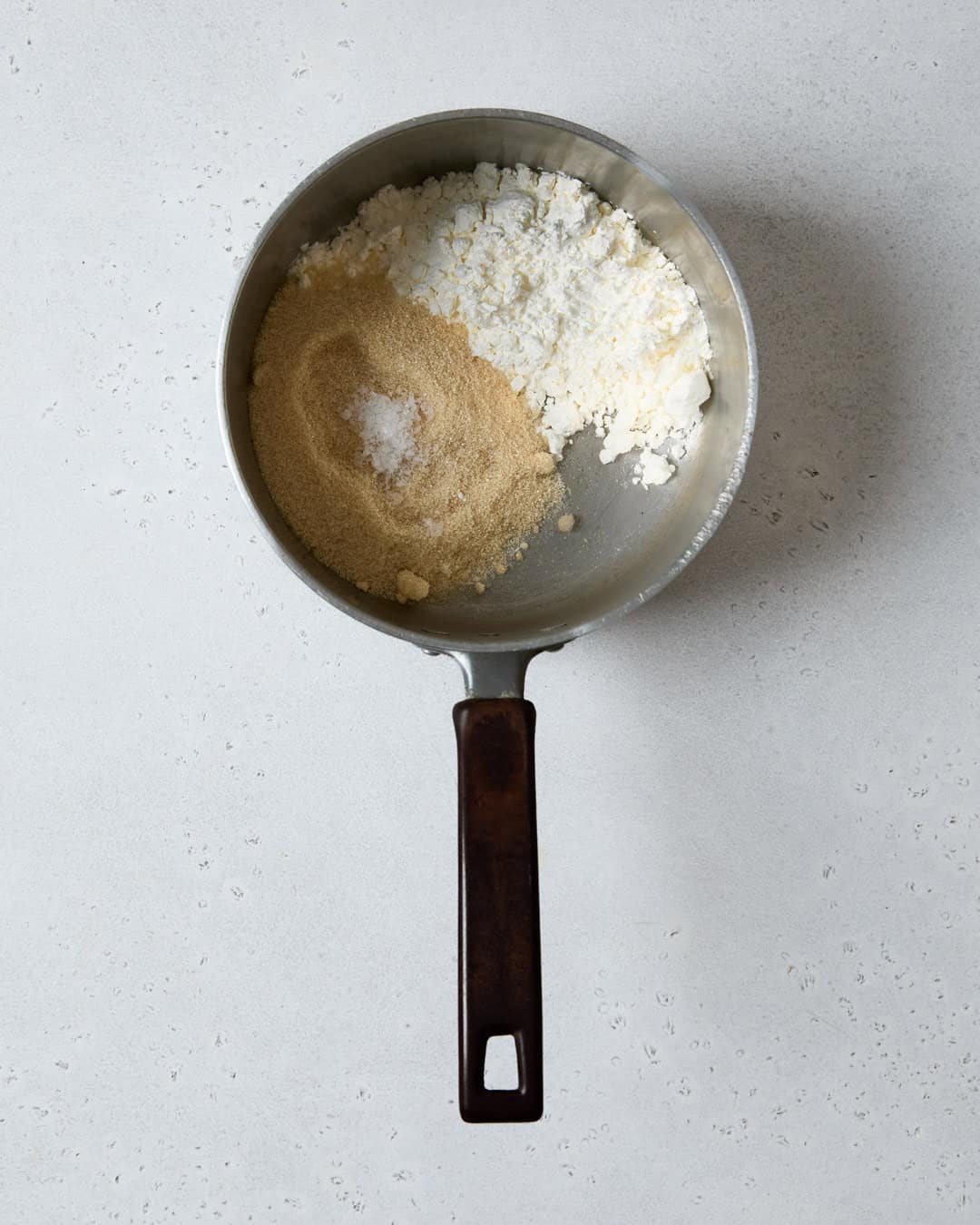
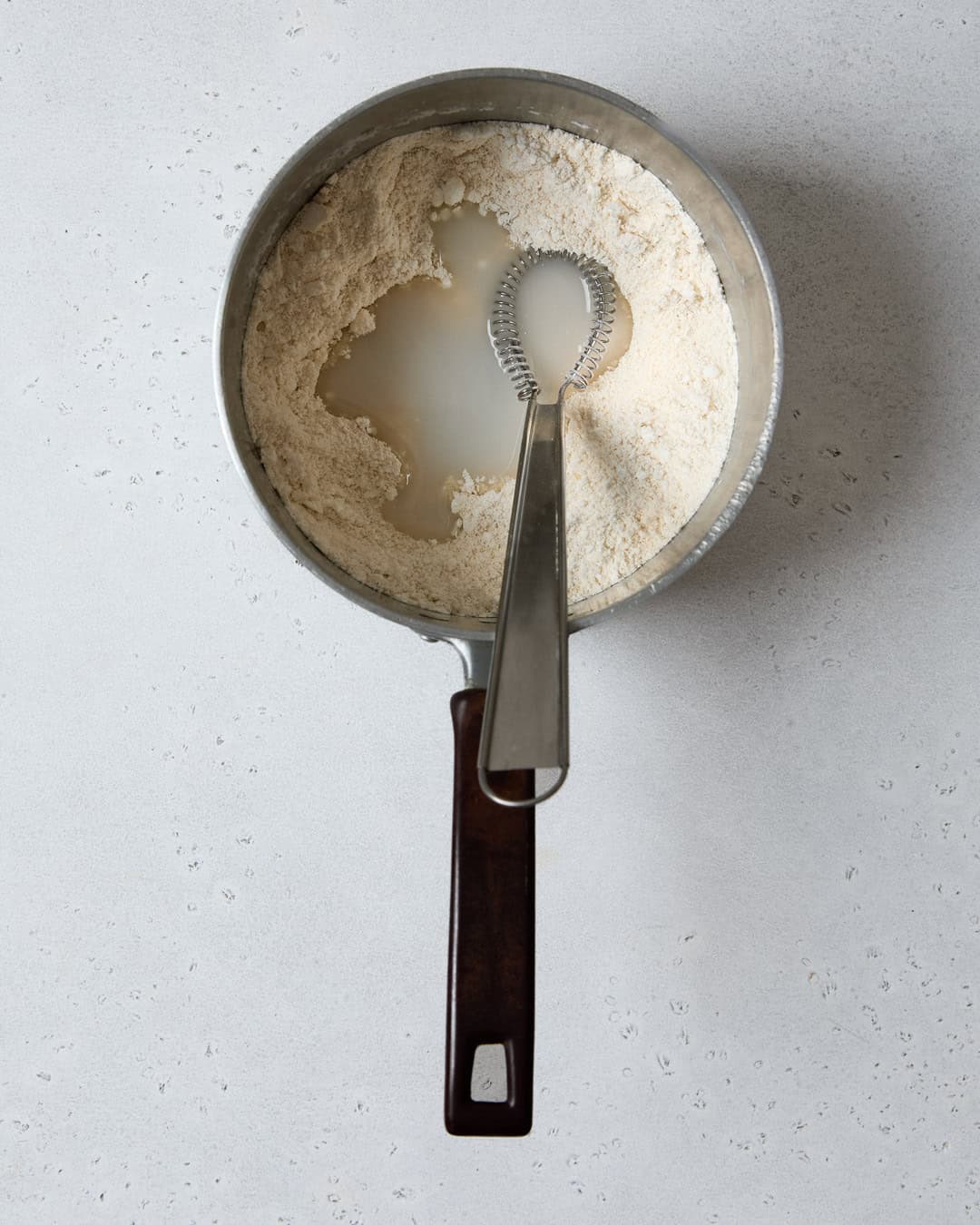
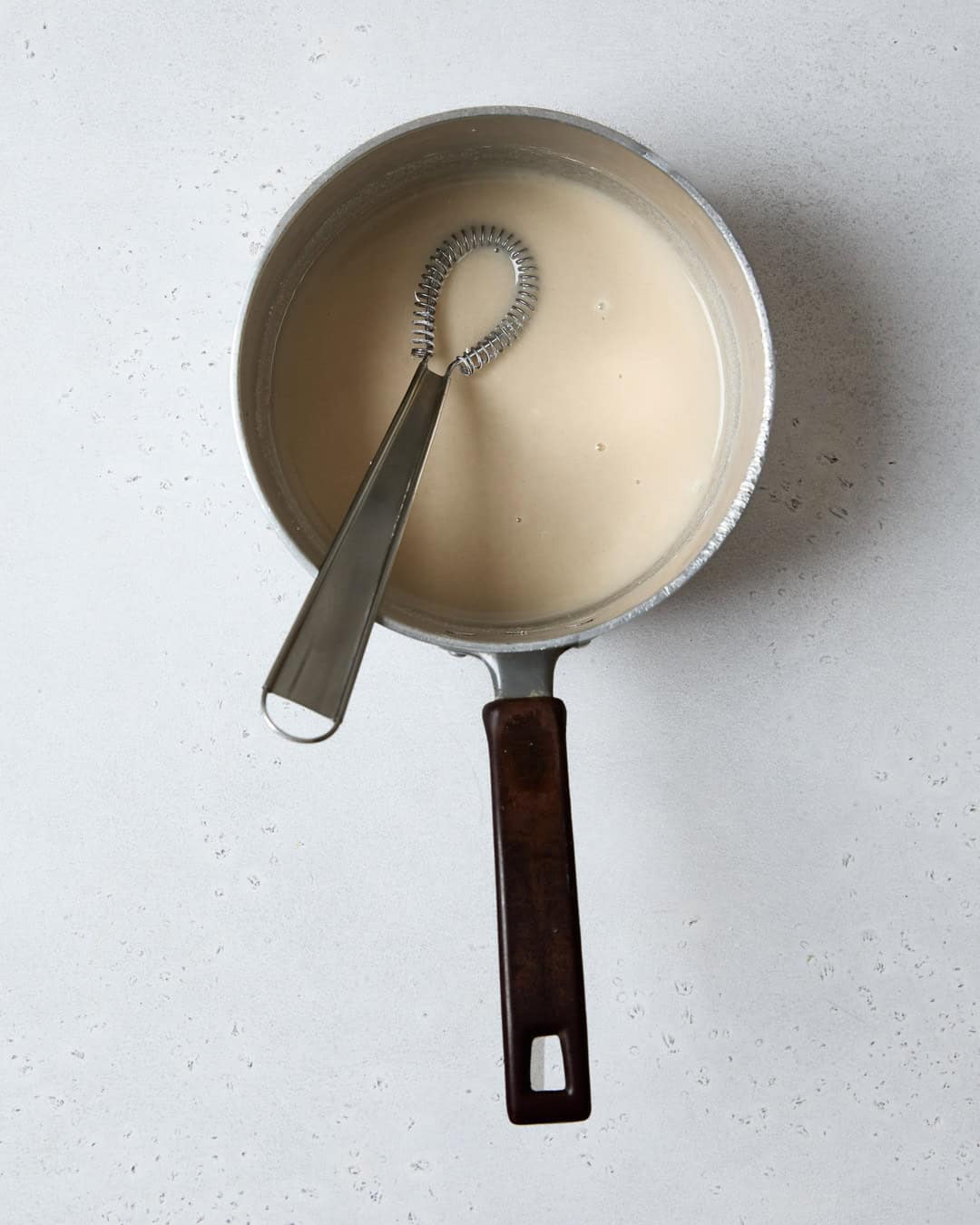
Combine with coconut milk. Gradually add the remaining coconut milk, whisking continuously to ensure no lumps remain.
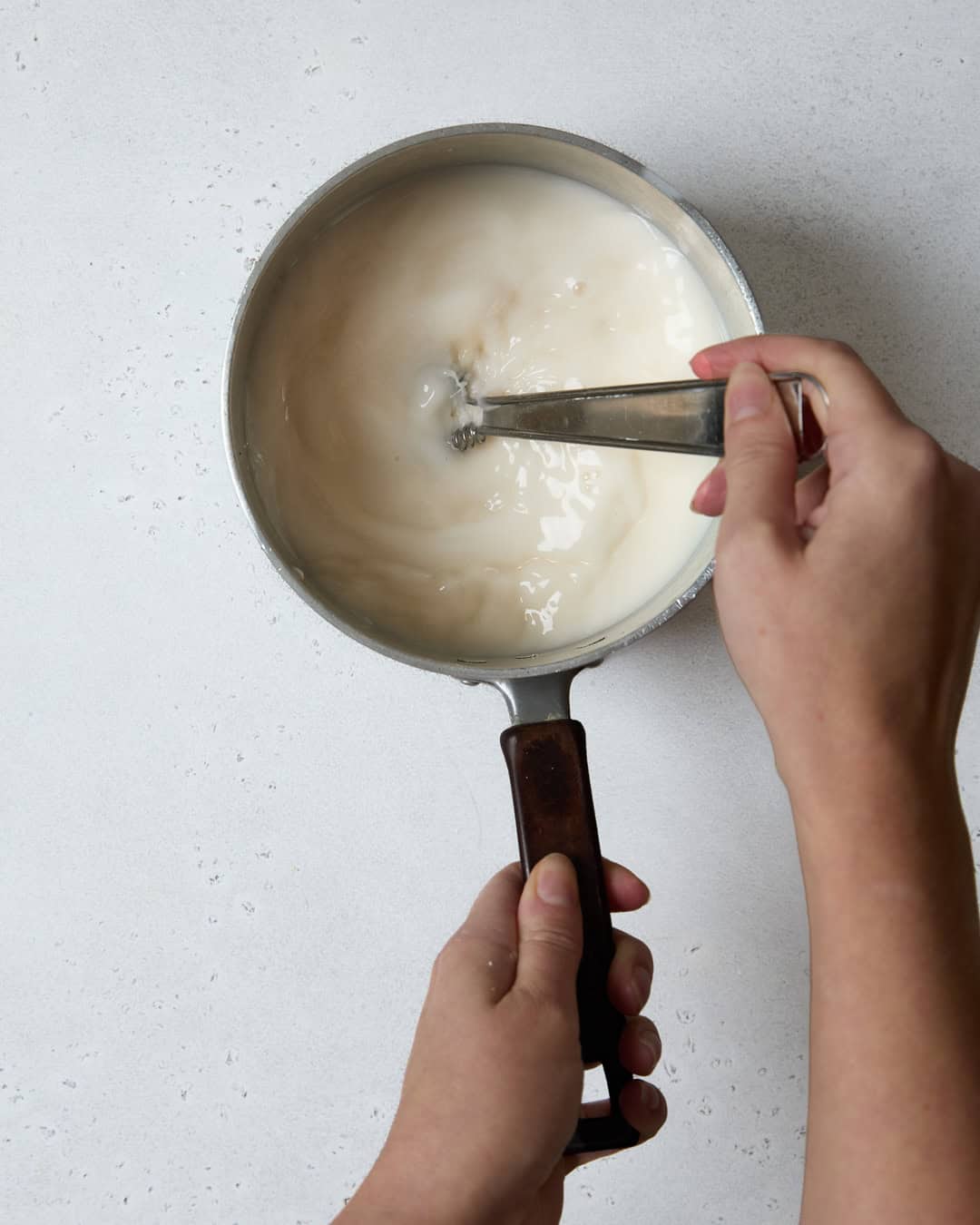
Cook the mixture. Place the saucepan over medium heat and stir constantly until it begins to boil. Once it thickens, reduce the heat slightly and continue stirring for another 5 minutes to ensure a smooth consistency.

Pour and set. Divide the mixture evenly into small bowls or molds. Let them cool slightly before transferring to the refrigerator. Chill for at least 1 hour to let the pudding set.
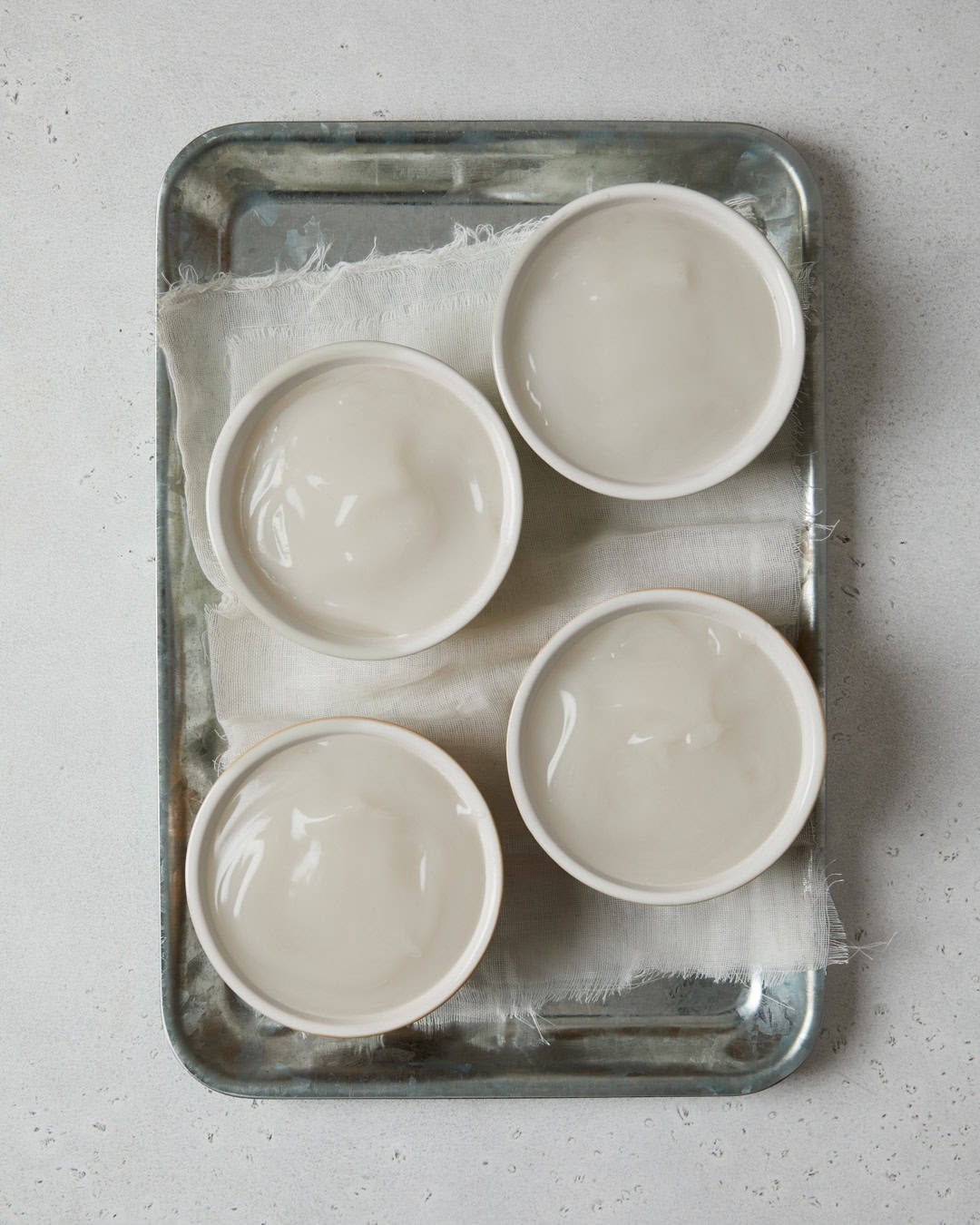
Serve and garnish. To serve, loosen the edges of the tembleque by pulling them away with your fingers, or with a knife, invert onto a plate, and sprinkle with cinnamon.

Useful Tips
- Mixture is too thin: If the Tembleque doesn’t set properly, it may not have been cooked long enough. Ensure the mixture simmers and thickens fully before removing from heat. If it still doesn’t work, you can dissolve a little more cornstarch with some water and slowly stir it into the simmering mixture. Cook it for another 1-2 minutes to see if the texture changes.
- Lumpy texture: To avoid lumps, whisk the slurry thoroughly before cooking. If lumps form nonetheless, strain the mixture before pouring it into bowls.
- Difficulty unmolding: Moistening the bowls lightly before pouring in the mixture can make it easier to release once set.
Why You’ll Love This Tembleque Recipe
- naturally & traditionally vegan
- smooth and creamy texture
- easy to make
- light & refreshing
How to Store Tembleque
Store leftover tembleque in an airtight container in the refrigerator for up to 2-3 days. For best results, keep it in individual serving bowls to prevent drying out. Avoid freezing, as it may alter the creamy texture.
Other Dessert Recipes You Might Like
- Biancomangiare: A Sicilian pudding made with almond milk
- Xingren Doufu: a Chinese almond tofu with Osmanthus Syrup
- Hazelnut goma dofu: a twist on Japanese sesame tofu
As an Amazon Associate I receive a small commission from affiliate links on this page.

Tembleque (Puerto Rican Coconut Pudding)
Ingredients
Coconut Milk
- 1 large raw coconut (optional)
Tembleque
- 75 g golden granulated sugar
- 30 g cornstarch
- 1/4 tsp salt
- 400 ml coconut milk (from above or store-bought, see Notes)
- 1 pinch ground cinnamon
Instructions
- Follow this recipe to make your own coconut milk from scratch for the best flavour.
- For the Tembleque, add the sugar, cornstarch, salt and 3 tbsp of the coconut milk to a small saucepan and whisk into a smooth slurry, then whisk in the remaining coconut milk. Bring to a gentle boil, stirring constantly, and simmer until it begins to thicken. Continue stirring for another 5 minutes, then divide over 4 small bowls. Let it cool slightly, before refrigerating for at least 1 hour to firm up.
- Gently loosen the Tembleque by pulling it away from the sides, then tip it out onto a plate, dust with cinnamon and serve.
Notes
- Store-bought coconut milk might give the Tembleque an opaque rather than white color.
- Storage: You can keep the cooked Tembleque for 2-3 days in the fridge.

Comment *
Fácil, rico y nutritivo ????????????????
Gracias por compartir
Un saludo desde Playa del Carmen México
Víctor
Igual soy ????????
Thank you so much! 🙂
Tried this with coconut milk from a coconut that was between green and mature.
The end result was a Tembleque that was semitransparent instead of white.
Still tasted great and fun to make!
Amazing! I’m glad you liked it and used fresh coconut!
At home we call it ‘Majablanco’ I love it because it is so soft, delicious and easy to make ❤️❤️
So much fun! ☺️